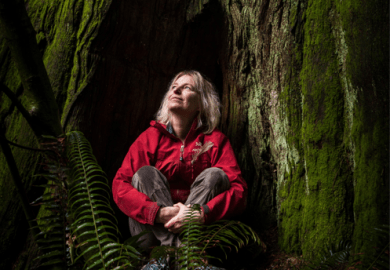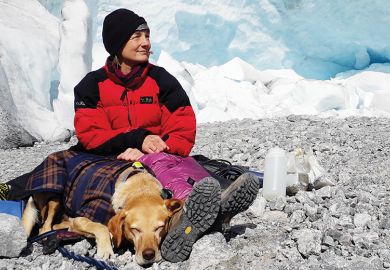Have we entered an age in which the human impact on the Earth’s systems is so large as to demarcate a new geological era?
This question has led to an extraordinary amount of scholarly writing over the past decade or two. Indeed, if intellectual history were stratigraphy, there is no doubt that the sheer quantity of these discussions would amount to a distinct marker for a new era of “anthropocenography” (to coin a neologism in an area already overly choked with them), of writing about our impact on the Earth. It is into this congested and contested territory that Simon L. Lewis and Mark A. Maslin step to offer a clear, intelligent and engaged history of and argument about the anthropocene.
The Human Planet is predicated on two central positions. First, the potted history of humankind’s occupation of the Earth in the first half of the book leads to the conclusion that there can be no meaningful debate as to whether we have left a geological mark on the planet. In soils, ice cores and lacustrine deposits, again and again our impact is self-evident and will sediment itself into permanence with the passage of time. The question, then, is not whether we are a geological agent, but from when to date this agency’s dominance.
Second, the process of offering a start date for the anthropocene is more (or at least as much) about the stratifications among physical scientists as about the segmentation of the geological column. As Lewis and Maslin show, students of the oceans disagree with their landbound colleagues and each can, by scientific legerdemain, wipe out the other’s periodisation of Earth history. Further, each group is riven by subdivisions, making consensus a process of fraught political negotiation as much as scientific determination. Earth science is shown to be human; all too human.
Lewis and Maslin implicitly and intelligently acknowledge that their own position must itself be controversial in a context where “geology plus humans equals politics”. Still more politely, they make their scientific foes apparent. The Human Planet argues for an anthropocene that begins with the ramifications of the Age of Discovery and dates this to a globally occurring carbon signature in 1610, the so-called “Orbis Spike”. Importantly, Lewis and Maslin also argue that the point of defining the anthropocene is political as much as it is scientific, the aim being to change futurity and thereby avoid Earth system collapse.
If their specific remedies at the close of the book – a universal basic income and a “Half Earth” where we leave 50 per cent of the planet to rewild itself – may not convince everyone, they do make a telling argument about the potential for change: “our power, unlike plate tectonics or volcanic eruptions, is reflexive”. Here, then, the anthropocene becomes the geological equivalent of Hegel’s phenomenology; Earth history realising itself. Whether we will look back on it as being as important as Hegel is not yet clear; that particular owl of Minerva has yet to flutter her wings. But if readers want a judicious and engaging marker of where the debate has reached, The Human Planet is it.
Robert J. Mayhew is professor of historical geography at the University of Bristol.
The Human Planet: How We Created the Anthropocene
By Simon L. Lewis and Mark A. Maslin
Pelican, 480pp, £8.99
ISBN 9780241280881
Published 7 June 2018
Register to continue
Why register?
- Registration is free and only takes a moment
- Once registered, you can read 3 articles a month
- Sign up for our newsletter
Subscribe
Or subscribe for unlimited access to:
- Unlimited access to news, views, insights & reviews
- Digital editions
- Digital access to THE’s university and college rankings analysis
Already registered or a current subscriber? Login









